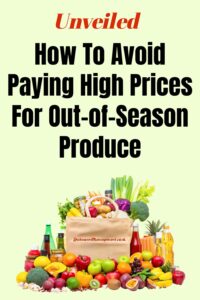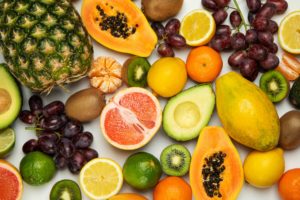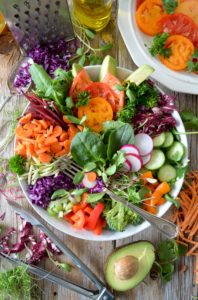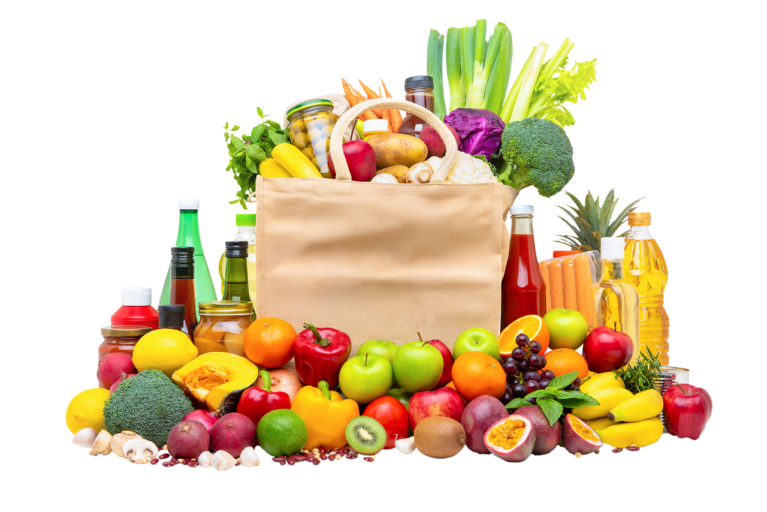Avoid Paying High Prices for Out-of-Season Produce
Managing food costs is among the most significant obstacles in operating a restaurant successfully. One of the main reasons for rising costs is using fruits and vegetables that are not in season. Out-of-season produce is usually more expensive, harder to find, and not as fresh. If you’re a restaurant manager, learning to avoid these costs is key to running a successful kitchen without hurting your budget or food quality.
This guide explains simple and effective strategies to avoid paying high prices for out-of-season produce. These tips can help you plan ahead, find better sources, and stay flexible with your menu.
Here’s a quick recap How to Avoid Paying High Prices for Out-of-Season Produce:
- Learn what’s in season and when
- Plan your menu around those items.
- Buy in bulk during peak season and preserve excess.
- Build relationships with local farmers and CSAs
- Work with suppliers for better deals.
- Train your staff to handle, store, and cook seasonal items well.
- Educate customers about seasonal food.
- Use inventory systems to track and plan better.

Challenges of Obtaining Out-of-Season Produce
Unfortunately, obtaining out-of-season produce can pose significant challenges for restaurant managers. When a specific fruit or vegetable is not in season, its availability decreases, resulting in limited supply and increased prices. Importing produce from other regions or countries can incur additional costs and logistical complexities, making it financially impractical for many restaurant businesses. Moreover, out-of-season produce may not meet the desired freshness and quality standards, affecting the overall taste and appeal of the dishes served.
Why Fresh Produce Matters in Restaurants
Fresh fruits and vegetables make dishes look better, taste better, and feel healthier. Customers are more likely to return to restaurants that use high-quality, fresh ingredients. Produce is often the base for many recipes, so its quality affects your entire menu.
However, when certain fruits or vegetables are out of season, they can cost much more and lose flavour and quality. Understanding how to manage produce purchases wisely can help you control food costs and keep your dishes consistent while you avoid paying high prices for your ingredients.

Reasons Why Produce Out of Season Is More Expensive
Out-of-season produce is harder to grow locally, so it must be shipped in from other places, sometimes from different countries, which adds to the cost. Also, because it’s not in peak supply, it’s harder to find, and sellers raise the price.
Other issues include:
- Long transport times reduce freshness.
- Lower nutritional value means that the food has fewer nutrients.
- Shipping increases the carbon footprint.
- Buying produce in-season is cheaper, fresher, and better for the environment.
Know What Foods Are in Season and When
To avoid overpaying, you must understand when different produce items are in season. For example:
- Strawberries are available in spring and early summer.
- Squash and pumpkins grow in the autumn.
- Tomatoes taste best in summer.
Create or download a seasonal produce calendar based on your region. This calendar should tell you what peak season is each month. Use it to plan your menu around what’s fresh and affordable.
Plan your menu using seasonal fruits and vegetables.
Building a menu around seasonal items is an innovative and creative way to manage costs. When produce is in season, it’s cheaper, more available, and better tasting.
Seasonal menus also include:
- Ask your kitchen staff to try new dishes.
- Keep your customers excited about new products.
- Show that you care about quality and use local ingredients.
- Rotating specials or changing your menu every season can make this process easier and keep your ingredients aligned with what’s affordable.
Related articles:
Energy Consumption In Restaurants
How Much Gas Does A Restaurant Use Per Day
Social Media Strategy For Your Restaurant
Unlock The Secrets Of Successful Restaurant Management With These 5 Powerful Books
Buy in bulk during busy times and store it wisely.
When produce is in season and at its cheapest, consider buying in larger quantities and preserving it. Here are some innovative ways to store produce:
- Freezing: Is an excellent method for preserving berries, corn, and beans.
- Canning: Use for tomatoes, peaches, or sauces.
- Pickling: Is great for cucumbers, onions, and carrots.
Make sure your staff is trained in proper storage techniques. To avoid waste, use the FIFO method—first in, first out.
Build connections with local farmers and suppliers.
Working with local farms is a cheaper and easier way to get fresh produce. Many farmers will:
- Offer you better prices than large distributors.
- Let you know what crops will be available soon.
- Set aside part of their harvest for your restaurant.
- Visit local farms and farmers markets.
- oin community-supported agriculture (CSA) programs.
These relationships can help secure a reliable, fresh, seasonal produce source.

Work with Your Suppliers on Pricing and Planning
You can still negotiate better deals if you buy through wholesalers or distributors. Here’s how:
- Set up long-term contracts with fixed pricing.
- Ask for seasonal availability lists.
- Share your menu plans so they can help source needed items.
- Build strong communication to prevent surprises.
- A good supplier can be a key partner in lowering food costs.
Use Alternative Ingredients When Needed
Look for alternatives if a particular item is out of season and too expensive. For example:
- Instead of tomatoes, use roasted red peppers or squash puree.
- Replace fresh herbs with dried ones or hearty greens.
- Use frozen peas instead of fresh when they’re out of season.
- Train your kitchen staff to be creative and flexible. When your menu can adapt, it’s easier to avoid pricey ingredients.
Educate Your Staff and Customers
Let your chefs and kitchen team know why using seasonal produce is essential. Teach them how to handle and store it properly to reduce waste. Also, tell your customers. Highlight seasonal items on your menu and mention the farms you work with. Customers appreciate fresh, local ingredients—and they’ll often pay more for them.
Secrets To Maximising Efficiency In Restaurant Food Cost Management
Use Preservation Techniques to Reduce Waste and Save Money
Wasting produce is like throwing money away. Use clever preservation techniques to extend shelf life:
Store items in the refrigerator correctly: Understand which products require high or low humidity.
Keep ethylene-producing items (such as bananas) away from delicate products (like greens).
Label and date everything.
Use preservation methods like:
- Freezing: Blanch vegetables before freezing to keep their texture.
- Canning: Store sauces, jams, or chutneys for future use.
- Pickling: Adds flavour and long shelf life to vegetables.

Set Up an Inventory Management System
Inventory management software helps track what you have, what’s about to expire, and what you need to reorder. Benefits include:
- Lower food waste
- Smarter purchasing
- Better menu planning
Review your inventory weekly and cross-check with your menu and supplier updates, keeping you ahead of price changes and spoilage.
Environmental and Business Benefits of Seasonal Sourcing
Using in-season produce is not only suitable for your budget. It also:
- Supports local farms and businesses
- Reduces the environmental cost of shipping produce long distances
- Show your customers you care about sustainability
- Being known for seasonal, local food can give your restaurant a strong reputation and help you stand out from competitors.
Related articles:
What Is The Role Of A Restaurant Manager
Restaurant Management Tips For Success
Restaurant Management Structure
Conclusion
By following these tips, restaurant managers can serve great food year-round without overpaying for produce, which is a Smart Way to Avoid Paying for Out-of-Season Produce.
To avoid paying high prices, you don’t need to sacrifice quality or creativity to save money – you need to plan smart, stay flexible, and think seasonally. Managing food costs is an ongoing process. But with the proper knowledge and planning, seasonal produce can become your secret weapon—not your most significant expense.

Frequently Asked Questions (FAQs)
Here are answers to some frequently asked questions about dealing with seasonal produce and incorporating it into restaurant operations:
How can I determine the seasonality of specific fruits and vegetables?
Seasonality of produce can vary based on location and climate. Local agricultural extension services, farmer’s markets, and online resources can provide information on the specific growing seasons in your region.
Are there any apps or websites that track seasonal produce?
Yes, several apps and websites provide information on seasonal produce. Examples include Seasonal Food Guide, Farmstand, and Locavore.
What are the advantages of using seasonal produce?
Using seasonal produce offers numerous advantages, including superior flavour, freshness, nutritional value, support for local farmers, reduced environmental impact, and potential cost savings.
How can I find local farmers and suppliers?
Local farmer’s markets, food cooperatives, community-supported agriculture (CSA) programs, and online directories are valuable resources for finding local farmers and suppliers.
What is the best way to store out-of-season produce?
The best storage methods vary depending on the specific produce, but general guidelines include proper temperature and humidity control, separation of ethylene producers, and utilizing appropriate packaging.
Can I negotiate prices with suppliers for out-of-season produce?
Negotiating prices with suppliers is possible for both in-season and out-of-season produce and will help you avoid paying high prices for your ingredients. Building strong relationships and discussing volume discounts or exclusive deals can help in negotiating better pricing.
Are there any government programs or initiatives supporting local sourcing?
Yes, various government programs and initiatives support local sourcing, such as farm-to-school programs, grants for local farmers, and incentives for restaurants to source locally.
What are some creative ways to incorporate seasonal produce into menus?
Creative ways include developing seasonal specials, featuring tasting menus, offering chef’s recommendations, creating themed events, and incorporating seasonal ingredients into signature dishes.
How can I communicate the benefits of seasonal ingredients to customers?
Use menu descriptions, table tents, or server explanations to highlight the superior flavour, freshness, nutritional value, support for local agriculture, and sustainability associated with using seasonal ingredients.
Are there any cost-effective alternatives to out-of-season produce?
Yes, frozen or canned versions of certain fruits and vegetables can be used as alternatives when out-of-season produce is not available. However, fresh seasonal produce generally offers the best quality and flavour.
How can I reduce food waste related to seasonal produce?
Reduce food waste by planning menus and portion sizes carefully, utilizing preservation techniques like canning or freezing, repurposing leftovers creatively, and donating excess food to local organizations.
What factors affect the pricing of out-of-season produce?
Factors include supply and demand fluctuations, transportation and logistics costs, importing challenges, market trends, and timing of purchases.
Can I import out-of-season produce to reduce costs?
Importing out-of-season produce is an option, but it involves additional costs such as transportation, customs duties, and compliance with import regulations. Assessing the overall costs and quality is important.
How can I adapt my menu to the availability of seasonal produce?
Regularly review and update menus based on the availability of seasonal produce. Collaborate with chefs, create daily specials, and offer seasonal tasting menus to showcase the best of what is currently available.
What are the risks of using out-of-season produce?
Risks include higher prices, potential compromise in flavour and quality, environmental concerns due to long-distance transportation, and challenges in sourcing consistent supply.
How do I ensure food safety when storing seasonal ingredients?
Ensure food safety by following proper sanitation practices, adhering to temperature control guidelines, implementing the first-in, first-out (FIFO) method, and regularly monitoring storage conditions.
How do I manage inventory effectively when dealing with seasonal produce?
Implement inventory management systems, conduct regular inventory audits, track expiration dates, and plan menu items based on the availability of seasonal produce to manage inventory effectively.
How can I maintain consistent quality with seasonal sourcing?
Work closely with trusted suppliers, establish clear quality standards, communicate expectations, regularly evaluate supplier performance, and provide feedback to ensure consistent quality with seasonal sourcing.
How To Control Food Costs In Restaurants: 7 Insider Tips On Causes And Solutions


